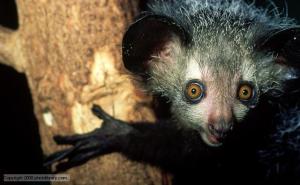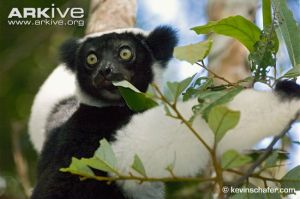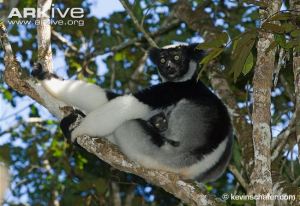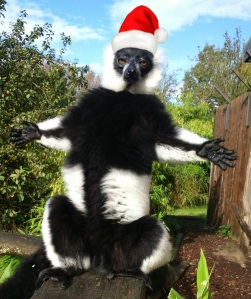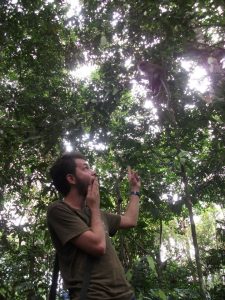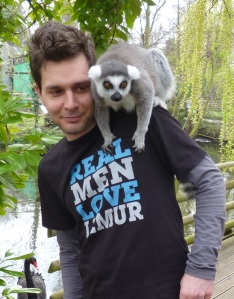I came, I saw, and I sort of conquered. The timing of the run was frankly awful. No, not because of preparation but because I missed my zoo shift and last week Howletts moved their black lemurs to the walk-through. I won’t find out until Saturday whether they’ve settled in with their new neighbours. If I had to bet on it I’d say no, female black lemurs are feisty.
Anyway, my half-marathon. It was a chilly morning in North London but such conditions are conducive to fast times, right? I arrived at the 1:45-2:00 pen shortly before the start, proudly showing off my Aspinall Foundation shirt. I saw only two other people running for animal charities.
To meet my target of a sub-two hour time I needed to run nine-minute miles. I can do that on flat roads but by adding hills in training I slacked off to nearer nine-thirty per mile. I set off well, overtaking a fair few folk and making two miles in just under eighteen minutes.
There was a problem, though. As the image shows, the course was undulating. And punishing, very punishing for a fun runner like myself. In fact it took a lot of the fun out of it, and eventually the running. However, in aiming for my two-hour goal I stuck at the same pace, taking my earphones out on one hill to hear myself panting deeply. That wasn’t happening in training.
I approached the halfway mark at Wembley a little worse for wear. I foolishly reached the six mile marker in fifty-four minutes, dead on nine per mile. Something had to give, especially as the route retraced its steps and therefore the same sadistic slopes.
I’m annoyed to say that I had to walk some of the inclines on the return trip. Hills aren’t usually an issue but in quick succession over a sustained period they challenge even the strongest athletes. I can truthfully say I have no regrets about my preparation (apart from missing the black lemurs). I didn’t drink for nearly four weeks, I ate like a lemur and I stuck to my training schedule. A sub-two hour time just wasn’t to be.
Donations inspire, too. I simply have to think of greater bamboos, indris or the primates at Howletts and I gain a little added drive. I crossed the line in two hours and nine minutes, disappointed in my time but fighting back tears of pride. I really do love these animals that much.
My target was £350 so £495 is a humbling amount to raise. Combined with my (much flatter) half-marathon for slow lorises, I’ve contributed more than £1200 to primate conservation. Without doubt that achievement is the greatest thing I’ve done in my life. Of course, another £5 would make that even better (hint hint).
It’s going to be odd not having this to work towards but my lemur adventures are far from over. I’ll stay at Howletts as long as they have me, I write for the brand new Lemur Conservation Network, and in June I visit Madagascar. If all goes to plan then there won’t be tears of pride but of happiness.
Nothing written about lemurs on this site is hyperbole. They are the world’s most endangered vertebrate and things are only getting worse – I recently found out that my beloved crowned lemurs face losing 99% of their habitat by 2080. That means extinction.
If you stumble upon this site then please consider what you can do to help lemurs fight for survival. They are far, far more than the stars of an awful kids’ movie. They are truly some of the most unique, quirky, cute, diverse, amusing, and amazing animals on this planet. Thank you to everyone who has helped me do my bit.



